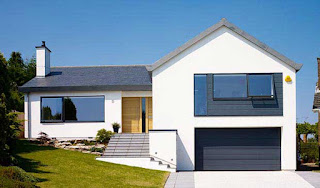Can you create a pool?
They can apply two types of rendering on the surface of your swimming pool: concrete and acrylic. Here's a synopsis of these materials: Cement This is the traditional rendering substance, and it still performs well.Rendering, like any other trade, necessitates the use of the proper tools and processes to achieve a smooth, long-lasting finish. Furthermore, swimming pool rendering necessitates specific processes and know-how to provide you with a pool interior that results in a flawless, totally tiled surface.The swimming pool, unlike many other areas of the home that require renderings, such as the outside walls and floors, is always under pressure. The pressure is caused by both internal and exterior forces generated around the swimming pool. Internal pressures are caused by the water in the pool, which pushes the pool's walls outwards, but external pressures are caused by changing ground forces around the pool, which push the pool's walls inwards.These continual opposing forces frequently result in cracks along the pool's walls and floor. As a result, appropriate rendering combinations are necessary to withstand these stresses and create a long-lasting finish.
Swimming Pool Repair: Pools are continuously subjected to exterior weather conditions and excessive wetness, both of which can wreak havoc on the structure. Cracks, leaks, mildew, and other related issues are not unusual on pool surfaces. Pool renovations assist to solve these issues before they become too serious, saving you money on more expensive repairs. Resurfacing is one of the most typical large-scale swimming pool restorations, and here's a quick rundown of what happens:
· The pool has been drained so that professionals can thoroughly inspect the surface.
· They will carefully clean a pool's surface after identifying areas of concern and assessing its condition.
· Before prepping the pool surface for rendering, all necessary Patch & Render Repair is made.
· Pool wall experts methodically prepare the surface by removing material where necessary, fixing gaps, and levelling the surface.
· After the walls have been prepared, specialists will apply even layers of render compounds. They will ensure that the application is perfectly level.
· After the render material has dried slightly, professionals will go over it again to smoothen edges and remove roughness.
Once the render material has fully cured, after-treatments or waterproofing solutions are applied. They double-check the finish to ensure there are no rough patches or missing parts. The smooth surface eliminates the possibility of cuts or abrasions when swimming.
Options are available.
You can choose from a variety of swimming pool rendering materials. Concrete render is the most cost-effective and widely used. It is simple to apply and, if properly maintained, lasts a long period. This substance is made up of precisely measured amounts of pigment, cement, sand, and lime. They also place a waterproofing solution over it to guarantee that the underlying materials are free of dampness.Acrylic is a somewhat more expensive alternative, but it has numerous advantages. It offers improved moisture resistance as well as better colour fastness, so acrylic rendering will last longer. Polystyrene is rarely used in pools and is only recommended for external or interior walls by most experts.





Comments
Post a Comment